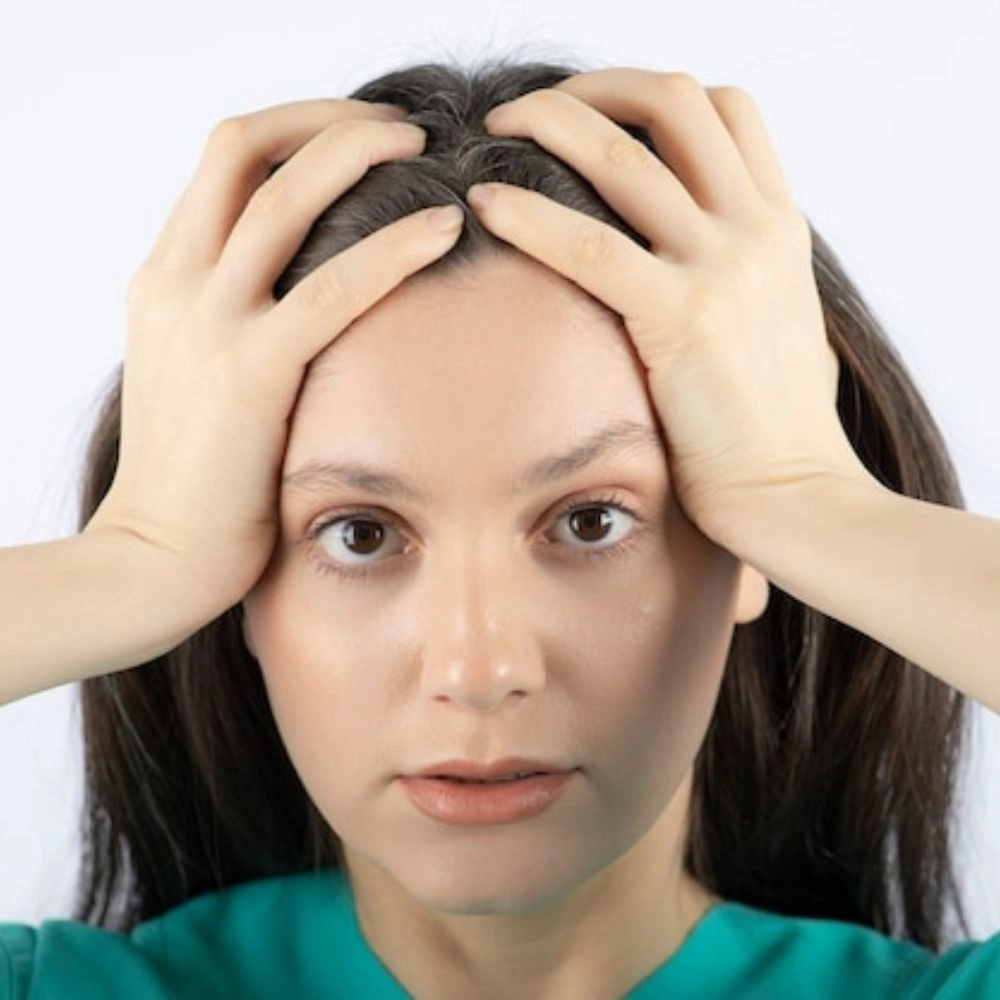Table of content
- Types of BREAST RECONSTRUCTION
- Procedure
- Risks and complications
- Pre-operation preparation
- Post-operative care
- Expected Results and recovery timeline
- Appointments and consultation
- Frequently asked questions
- Meet the team
- Pricing and payment plans
- Medical literature and research
- Support and counseling
- Send a message
EYEBROWS DROP
INDICATION – BRIEF
Eyebrow ptosis or “Eyebrows Drop” is the term for drooping eyebrows, which can be caused by both clinical and non-clinical factors. Clinically, it can be due to aging, neurological conditions, certain ophthalmologic surgeries, or facial trauma. Non-clinically, lifestyle factors like stress, smoking, and improper cosmetic procedures can contribute. The condition can affect one’s appearance, and in severe cases, can interfere with vision. Treatment varies from non-invasive measures such as Botox injections, to more invasive procedures like brow lift surgery, and is chosen based on the cause and severity of the drooping. An evaluation by a healthcare provider or dermatologist is crucial to determine the most suitable treatment.

INDICATION – DEFINITION
Several causal factors can lead to eyebrow ptosis:
Clinical factors
- Aging: As people age, skin loses its elasticity and the muscles lose their strength. This process can cause a gradual drooping of the eyebrows over time.
- Neurological conditions: Various neurological disorders such as Myasthenia gravis, Horner’s syndrome, or a stroke can cause eyebrow ptosis.
- Ophthalmologic surgeries: Some eye surgeries or procedures can cause eyebrow ptosis, especially if they involve manipulation of the eyelid or surrounding tissues.
- Trauma or injury: Any trauma to the face or skull, or specifically the forehead region, can damage the structures holding up the eyebrows, causing them to droop.
Non-clinical factors
- Lifestyle factors: Factors such as stress, smoking, excessive alcohol consumption, poor nutrition, and lack of sleep can accelerate skin aging, leading to drooping eyebrows.
- Improper cosmetic procedures: Botched Botox injections, or other poorly performed cosmetic procedures can result in temporary or permanent drooping of the eyebrows.
Treatment options depend on the cause and severity of the condition. They range from nonsurgical treatments like Botox injections and thread lifts, to more invasive procedures such as brow lift surgery. However, it’s crucial to have a thorough evaluation by a healthcare provider or a dermatologist to determine the most suitable treatment for individual cases.
SYMPTOMS AND DIAGNOSIS
Symptoms
- Tired or sad appearance
- Difficulty with peripheral vision
- Increased forehead wrinkles from raising eyebrows
- Eye fatigue, especially in the evenings
Diagnosis
Diagnosis of eyebrow ptosis is usually made through a physical examination and a detailed medical history. In the physical examination, the healthcare provider will assess the position of the eyebrows, the skin’s elasticity, and the strength of the muscles around the eyebrows. They may ask you to make different facial expressions or close your eyes against resistance.
If the drooping is sudden, severe, or accompanied by other neurological symptoms such as double vision, muscle weakness elsewhere, or changes in facial sensation, additional tests might be needed to rule out conditions like stroke or Myasthenia gravis.
Prognosis and Impact

Prognosis
The prognosis largely depends on the cause of the drooping. If it’s due to aging or is a side effect of cosmetic procedures like Botox, the drooping can be improved with appropriate treatments, such as further cosmetic procedures, including fillers or a surgical brow lift. When the drooping is due to a temporary cause like an injury or an adverse reaction to medication, the condition usually improves once the underlying issue resolves.
However, when eyebrow ptosis is associated with neurological disorders like Myasthenia gravis or Horner’s syndrome, managing the primary disease can help but may not completely resolve the drooping. In such cases, a multidisciplinary approach involving neurologists, ophthalmologists, and plastic surgeons may be necessary.
Impact
The impact of eyebrow ptosis can be both physical and psychological. Physically, severe drooping may interfere with the upper field of vision. Psychologically, the change in appearance can affect an individual’s self-esteem and social interactions due to the perceived aging, tired, or unhappy look. Thus, treatment is not only geared towards addressing the physical symptoms but also towards improving one’s overall quality of life.
Treatment Options
Non-Surgical Treatments:
- Botox Injections: These can be used to lift the eyebrows temporarily by relaxing the muscles that pull the eyebrows downward. The effect typically lasts for 3 to 6 months.
- Dermal Fillers: These can provide a temporary lift to the eyebrows and are often used in conjunction with Botox.
- Topical Prescription Creams: These creams can improve skin elasticity and reduce mild sagging over time.
Surgical Treatments:
- Brow Lift Surgery: Also known as a forehead lift, this procedure tightens the loose skin on the forehead and adjusts the underlying muscles to provide a more youthful eyebrow position. It can be performed through different techniques, with varying levels of invasiveness.
- Blepharoplasty: While this surgery is primarily aimed at rejuvenating the upper eyelids, it can also provide a slight lift to the eyebrows.
- Direct Brow Lift: This is a less common procedure where the excess skin above the eyebrows is removed to lift the eyebrows. This method is generally reserved for those with very heavy brows or those unable to undergo more extensive surgery.
- Endoscopic Brow Lift: A less invasive surgical option that uses small incisions and a tiny camera to guide the procedure.
Risks and Side Effects
Non-Surgical Treatments:
- Botox Injections: Risks include bruising at the injection site, headaches, and in rare cases, a drooping eyelid or eyebrow if the Botox migrates.
- Dermal Fillers: Side effects can include redness, swelling, and bruising at the injection site. There’s also a risk of allergic reaction or infection, and in rare cases, the filler can block a blood vessel.
- Topical Prescription Creams: These might cause skin irritation, redness, or a burning sensation. There may also be possible allergic reactions.
Surgical Treatments:
- Brow Lift Surgery: Risks include scarring, infection, bleeding, hair changes along the incision, and nerve injury leading to changes in sensation or muscle weakness. Anesthetic risks are also present, as with any surgery.
- Blepharoplasty: Potential complications include infection, scarring, blurred or double vision, dry eyes, difficulty closing the eyes, or asymmetry between the two eyes.
- Direct Brow Lift: Risks include noticeable scarring, hair loss at the incision, and changes in sensation.
- Endoscopic Brow Lift: Although less invasive, it still carries the risk of infection, scarring, hair loss, and changes in sensation. There’s also a slight chance of damage to the facial nerves.
FAQ Section
Eyebrows Drop, or eyebrow ptosis, is a condition where one or both eyebrows droop or sag. It can be caused by various factors, including aging, neurological conditions, trauma, or lifestyle factors.
The primary symptom is a noticeably lower position of one or both eyebrows, which might give an appearance of tiredness, sadness, or aging. In severe cases, the drooping eyebrow may interfere with vision, particularly the upper field of sight.
Diagnosis is typically made through a physical examination and a detailed medical history. In some cases, further tests may be needed, especially if other neurological symptoms are present.
Treatment options can range from non-surgical treatments like Botox injections and dermal fillers to surgical procedures like brow lift surgery or blepharoplasty. The choice of treatment depends on the cause and severity of the condition.
All treatments have potential risks and side effects. Non-surgical treatments like Botox or fillers can cause temporary side effects such as bruising or swelling at the injection site. Surgical treatments carry risks like infection, scarring, or changes in sensation. It’s crucial to discuss these risks with your healthcare provider.
In severe cases, the drooping eyebrow can interfere with your upper field of vision. If this happens, it’s essential to seek medical attention as it can affect daily tasks like driving or reading.
Insurance coverage varies widely and depends on the cause of the drooping and the type of treatment. If the drooping is affecting your vision, insurance may cover a portion of the cost. It’s best to discuss this with your insurance provider.
Recovery time varies based on the treatment. Non-surgical treatments have minimal to no downtime, while surgical procedures can require a few weeks for full recovery.
While you can’t prevent all causes of Eyebrows Drop, maintaining a healthy lifestyle, protecting your skin from the sun, and avoiding unnecessary strain on the facial muscles can help maintain skin elasticity and muscle strength.
While there’s no surefire home remedy to cure eyebrow drooping, maintaining good skin health with a proper skincare routine and facial exercises may help to some extent. However, these methods are not clinically proven to provide significant results. If you’re concerned about drooping eyebrows, it’s best to consult with a healthcare provider.
